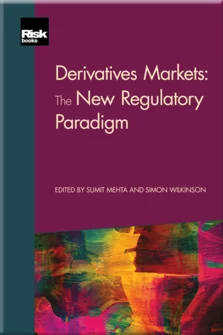Conclusion
Conclusion
Introduction
European Market Infrastructure Regulation
Dodd–Frank
Basel III
Solvency II
CCPs: Central Clearing of OTC Derivatives
Banks: The Impact of New Regulation
Asset Managers
Hedge Funds: Risk Management in an Illiquid World
Insurers: Liability-driven Investing for Insurers
Corporate Treasuries
Sovereigns
Other Sectors
Counterparty Risk Management
Collateral: Transformation & Optimisation
Liquidity
Pricing
Conclusion
The range of derivative regulations covered in this book is a double-edged sword for their creators and critics alike. The true impact of the regulations will only be known when the next crisis hits, and with the help of perfect hindsight the risks that remain – and any new ones inadvertently created – will be obvious. By the time the dust settles, any perfect storm that has hit the US$700 trillion global derivatives market will have caused myriad side-effects, fundamentally changing derivatives pricing, destroying some business models and developing new sources of risk.
Therefore, it is interesting to pose the question: has regulation adequately achieved its core objectives of increasing transparency, mitigating counterparty default concerns and eliminating systemic contagion risk? If so, has that victory come at the cost of a greater loss? Readers will perhaps agree that the answers to this are mixed. Reporting requirements, while producing significant operational burdens, have not deterred end-user participants to the extent that was feared initially. Much of the post-crisis debate centred on the resulting increase in global collateral requirements, with some estimates putting
Copyright Infopro Digital Limited. All rights reserved.
As outlined in our terms and conditions, https://www.infopro-digital.com/terms-and-conditions/subscriptions/ (point 2.4), printing is limited to a single copy.
If you would like to purchase additional rights please email info@risk.net
Copyright Infopro Digital Limited. All rights reserved.
You may share this content using our article tools. As outlined in our terms and conditions, https://www.infopro-digital.com/terms-and-conditions/subscriptions/ (clause 2.4), an Authorised User may only make one copy of the materials for their own personal use. You must also comply with the restrictions in clause 2.5.
If you would like to purchase additional rights please email info@risk.net









